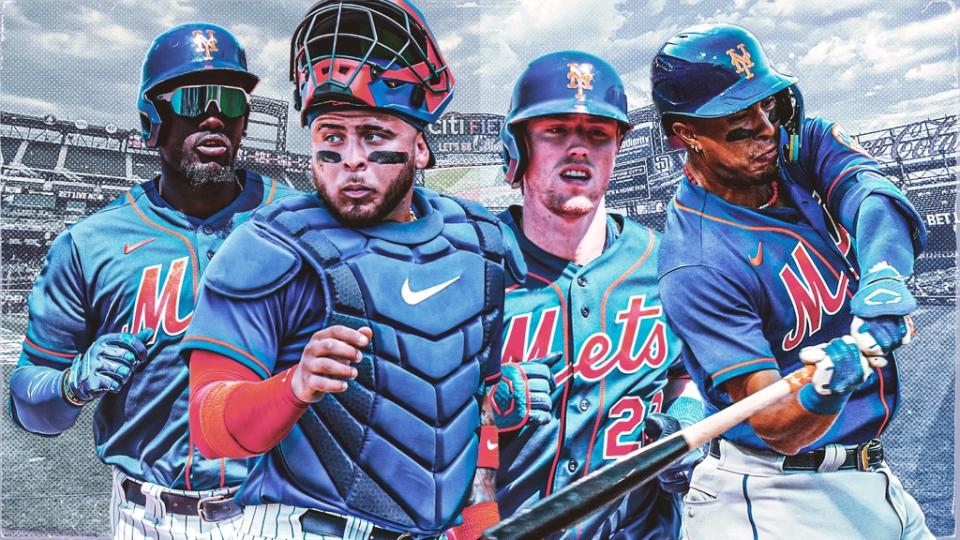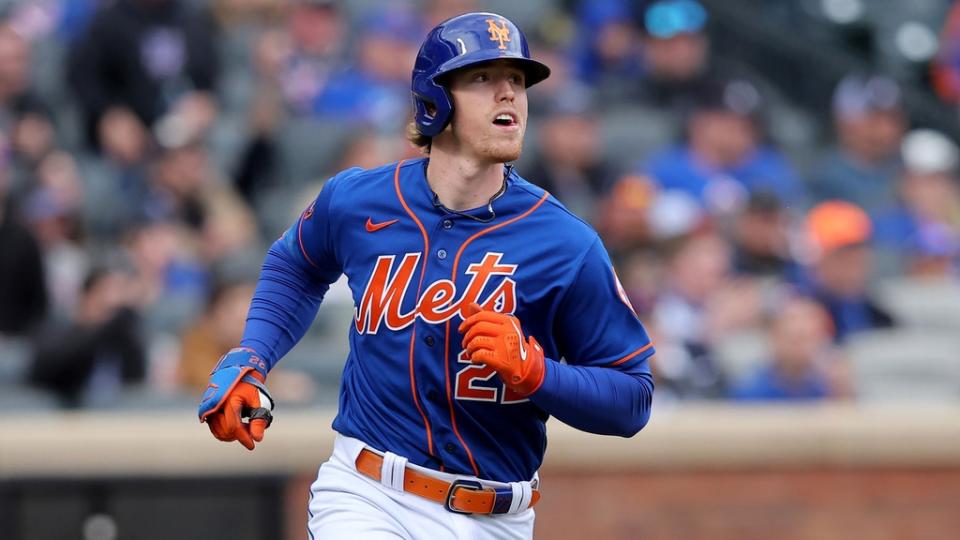
They were never supposed to be saviors for a win-now Mets team loaded with proven veterans, but rookies Francisco Alvarez, Brett Batyand Mark Vientos provided such a spark for a lethargic lineup that anything seemed possible for a minute or two there in mid-May.
The only question seemed to be how soon Ronny Mauricio would join the party.
But since then, the Baby Mets, as they were dubbed by Francisco Lindor, have all slumped to one degree or another, raising the question of what should realistically be expected from them the rest of the way.
For answers I asked four scouts, two who have seen the young players only in the minor leagues, and two who have seen them more recently since their call-ups to the big leagues.
As something of an aside, here was perhaps the noteworthy answer I received from one of the scouts:
“None of them are going to hit enough to matter if Lindor doesn’t figure it out at the plate,” the scout said. “Him and a few of the other regulars. Rookie hitters are going to have ups and downs. The Mets need their vets to hit if they’re going anywhere this season.”
Fair enough. Yet we’ve already seen what a few well-timed hits, and especially home runs, from the rookies can do to make the Mets lineup deeper and more dynamic, offering the power element it needs.
“I see them as X-factors,” another scout said. “They’ve taken a step back as pitchers have zeroed in on weaknesses, but I think they’re all good enough to make adjustments. Depending on how well they do that, they could take this offense to a higher level.”
And then there’s Mauricio, the only one of the Big Four prospects who hasn’t played in the big leagues yet. Scouts think he could use more time in Triple-A to work on plate discipline but agree that he has difference-making potential and likely will get his own call-up eventually this season.
With all of that in mind, here are up-to-date scouting reports on the Baby Mets, and I’m including Mauricio in that group.
ALVAREZ
Coming home from the Mets’ road trip to Chicago and Colorado, Alvarez was scorching hot, with five home runs in eight games, hitting .269 with an .885 OPS. But then he went 0-for-14 with four strikeouts on the just-completed homestand, lowering his average to .237 with a .281 on-base percentage and a .783 OPS.
Worrisome or an inevitable cool-down? The two scouts who saw him on the homestand believe it’s more the latter.
“Of their young guys, he’s the one I’d be least worried about,” said one scout. “I thought maybe he got a little home run-happy, started looking to pull more than normal. Pitchers are making sure to get in off the plate with hard stuff, and that’s made him a little more vulnerable on pitches away.
“But it’s more of an ebb-and-flow thing. That’s hitting, especially for a young guy. I like his approach. He’s quick enough that he can get to the fastball on the inner third, and for the most part that allows him to be patient and not overreact to off-speed stuff. I’m confident he’ll get it going again.”
“The kid’s a stud,” the other scout said. “He came back to earth but I didn’t see anything alarming. I like the way he lets the ball travel. He’s going to hit home runs in bunches when he’s seeing the ball well.”

BATTY
After his first 15 games with the Mets this season, Baty was hitting .319 with an .895 OPS. In the 24 games since then he’s hitting .179 with five extra-base hits, and though he had a few key hits during that rookie-driven five-game winning streak in May, Baty is 5-for-35 since and chasing down- and-in breaking balls far too regularly.
“It’s obvious righthanders are attacking him with breaking stuff and they’re going to keep doing it until he proves he can lay off the bad ones,” one scout said. “He was a good breaking ball hitter in the minors but he wasn’t seeing the types of sliders and cutters he’s seeing in the big leagues.
“He’s got a great approach overall because he’s so good at using the opposite field. That’s why he can hit lefties because he doesn’t commit early and he’ll take a breaking ball the other way so well.
“I think he’ll make the adjustment but I can’t say it’s not a concern. At times he has looked so conscious of the breaking stuff that he’s been vulnerable to the hard stuff on the outer half.”
“He’s a good hitter who has looked a little overmatched lately,” said another scout. “He can hit the breaking stuff, but in the big leagues it’s harder recognizing the spin because it’s so tight and pitchers command it so well. A lot of young hitters go through it. I think he’ll adjust with more reps but it might take some time.”
WINDY
After a home run that jump-started the offense in his first game after his call-up, and a key RBI single in his second game, Vientos is 4-for-24 with no extra-base hits in 10 games since then while playing only occasionally, and mostly against left-handed pitching.
Would getting more regular at-bats make a difference?
“I think you’d get a little more of a true read,” said one scout. “But it’s hard to say for sure. He does have holes. His swing gets long at times and makes him vulnerable to high velocity, especially up in the zone. And in turn that makes him vulnerable to the breaking stuff as well.
“But in the minors he showed the ability to square up good fastballs and hit them a long way. That’s why they brought him up, but it’s hard for a young guy like that to get into any type of rhythm when he’s not playing much.
“I did see him make an adjustment to velocity in an at-bat last week when he got beat on a couple of fastballs and then made hard contact on a fly ball to drive in a runner from third. That made me want to see more of him.”
MAURICIO
Two scouts who have seen Mauricio in Triple-A this season say he is making progress in terms of plate discipline, which is his biggest flaw, but would benefit from more time in Syracuse to continue maturing as a hitter.
“The Mets were right not to call him up when he was really hot a few weeks ago,” said one scout, “because I think major league pitchers would get him to chase regularly, especially against breaking stuff.
“But he’s getting better at recognizing spin and laying off sliders down. From last year in Double-A to this year I’ve seen a difference and I think with more time he’ll continue to improve in that area.
“He’ll never be a high on-base percentage guy. He’s not going to walk a lot. But he can be an impact hitter in the big leagues if he can be a little more disciplined. He’s not striking out quite as much (as last year), and that’s a good sign. I think he can help the Mets at some point in the second half of the season.”
As of Monday Mauricio was hitting .333 with 23 doubles, eight home runs, and a .551 slugging percentage. He has 41 strikeouts and 11 walks.
As for where Mauricio would play if called up, the Mets moved him from shortstop to second base a month ago, and then last week GM Billy Eppler said Mauricio would be working out in left field before games, indicating that he’ll play there in some games.
One scout who saw Mauricio play second base said he could see why the Mets may be re-thinking the idea of having him play there in Queens and moving Jeff McNeil to left field.
“He didn’t look real comfortable at second when I saw him,” the scout said. “You can tell he hasn’t played there much, if at all. He’s not smooth around the bag turning a double play. He’s athletic enough to adapt but I can see why they want to take a look at him in left field. If he can be adequate there they’d be better off leaving McNeil at second.”